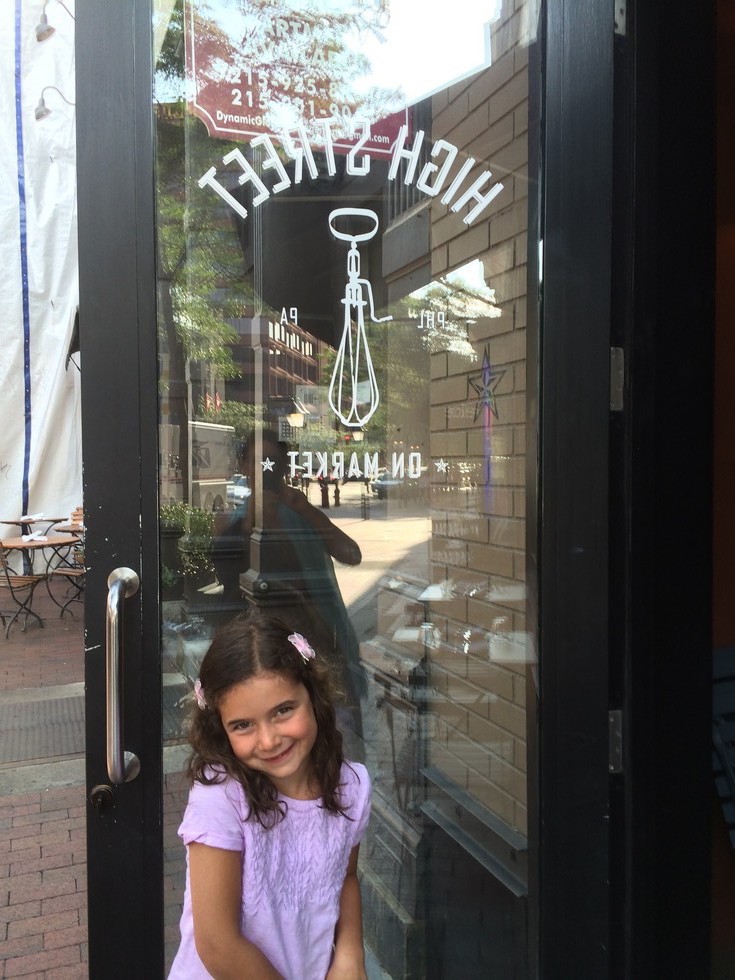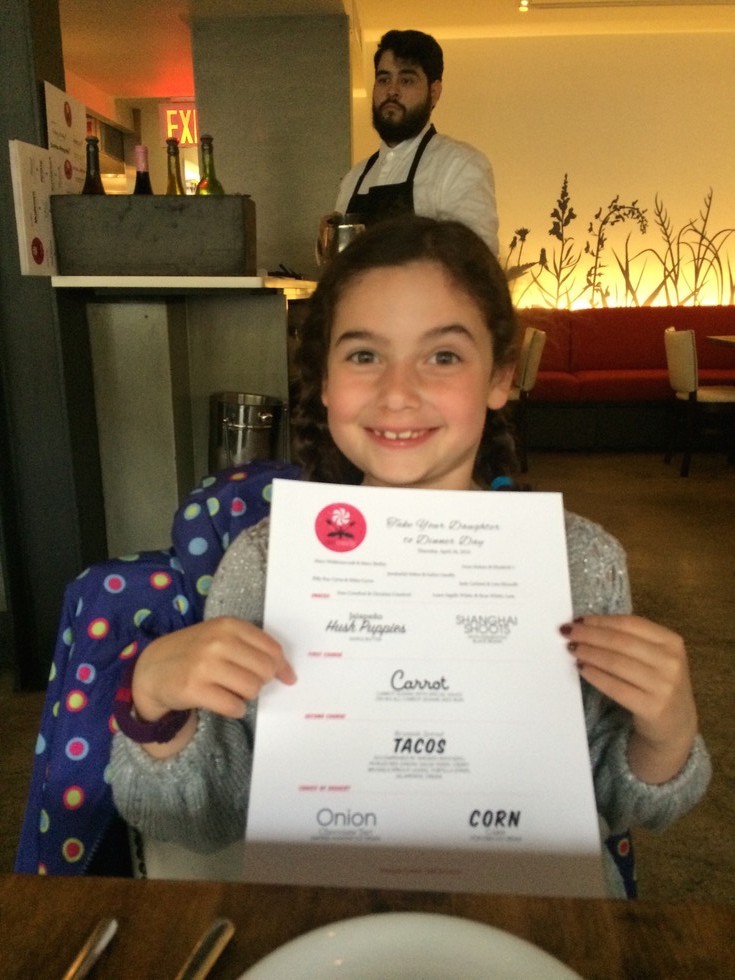I wasn’t raised in what you’d call a foodie family. I grew up in the ’70’s, the days of casseroles, Cap’n Crunch, The Brady Bunch and Scooby Doo, and food wasn’t what it is today. That’s not to say we didn’t eat well—we did—but we weren’t eating organic steak with kale chimmichurri and heirloom bean stew. We were a good food family in that I was fed well and regularly by my mother, a single parent who worked as a nurse part-time and managed to pick us up from school and have a home-cooked meal on the table every night—a task I never gave a second thought to at the time, but now look back upon with wide-eyed amazement.
My mother, who is Persian, cooked mostly American dishes during the week. There was fried fish—thin fillets of flounder dunked in egg and dredged through seasoned Jason breadcrumbs and fried until perfectly golden in a skillet of hot oil—served every week on Wednesdays, after she picked me up from the ballet class I took in a small windowless studio on Queens Boulevard underneath the Knish Knosh. There were lamb chops, prepared in the broiler under the stove, which I gnawed on like some rabid dog, snacking on the crispy bits of fat on the bone. Tater tots, too, prepared in the Toast-R-Oven on the wood-colored laminate countertop in our small galley kitchen. And sometimes, homemade French fries, which my mother called chips (her youth in England coming through), cooked in a small Fry Baby plugged in by the stove. There was also cheese lasagna, one of my favorite meals, which I actually preferred the next morning, eaten cold, straight from the pan for breakfast, a foreshadowing of my college days.
On Friday nights, the best day of the week, she made Persian food—platters of saffron-stained rice spooned out and topped with the potato crust banged out from the bottom of the pot, along with a few kinds of khoresh—slow-simmered stews made with herbs and sour lemon, or beef and chickpeas, tangy with tomato and warmed with cinnamon.
These were the meals of my childhood.
My parents were divorced by the time I was six years old, and I spent alternate weekends and every Tuesday night with my father, a cancer surgeon who knew about as much about cooking as I did about cancer surgery. Meals at his place, a tidy one-bedroom apartment with a pull-out couch and a day bed for my brother and me in the living room, went something like this: eggs, Stouffer’s Spinach Soufflé—puffy and green and a true delicacy as far as I was concerned—and either chicken cutlets or overcooked steaks, so tough and rubbery I felt I should learn the Heimlich maneuver to make sure I could at least save my brother if one of us went down.
But what my father liked to do more than cook was take us out for dinner, and this was how I learned to love restaurants. Mostly we went to diners—The Green Kitchen on First Avenue, or The Mansion on the corner of 86 th Street. I loved diners, and found them to be just the most wondrous inventions where every kind of food imaginable—pancakes, pasta, burgers, moussaka—was served to every sort of person. Suits, construction workers, blue-haired ladies, they were all welcome. These sturdy meals, served on heavy china plates somewhere between white and gray, ended with a trip up to a glass dessert case twirling with shelves stocked with mile-high layer cakes, chocolate-coated bells, glistening jellied fruit tarts, and whipped cream topped shortcakes crowned with pointy strawberries the size of dinner rolls. My brother and I would go up to the twirling case and point to what we wanted, and it would appear moments later, with a massive fork.
There were also restaurants like The Metropolitan Café, where my father convinced me to try fried calamari by telling me it was chicken (It worked). On special occasions, there was Barbetta’s, The Rainbow Room, Serendipity, and the most fantastic place of all, Maxwell’s Plum, which seemed to me not be a restaurant at all, but an adult amusement park with balloons and gorgeous colorful panes of stained glass, and crowds of people smiling and laughing, the brilliant happy energy of a good crowd, and where a dessert called Baked Alaska was rolled out to our table on a cart and set on fire. I can still see the pale meringue taking color under the flames. What more could life offer?
To my great surprise, much more. I was 39 when I had Emily, just ten months after I got married. She was born in May of 2009 and from the moment she could eat, she did it with conviction and determination. Her first solid food was a piece of smoked meat, warm and tender and smacked with hickory, plucked from my sandwich at Mile End. She gobbled it up and went for more. From there, she ate anything and everything in her way. We took her to Smorgasburg and she would snack on whatever we picked up—pulled pork, grilled cheese, kimchi buns, you name it. At Hibino, our favorite Japanese place on Henry Street, I would order her a Bento box and watch her eyes light up as it arrived, a little world of wonder in five neat compartments, and make quick work of its contents—seaweed, purple pickles (more, more, more!), salmon collar, sushi, griddled sausages, pork dumplings, octopus fritters, all of it. By the time she was four, she would no longer share with me; I had to get my own.
 Emily on her first eating trip to Philadelphia.
Emily on her first eating trip to Philadelphia.
This past summer, when she turned six, we took our first mother-daughter trip to Philadelphia to eat. I wanted to take her to Zahav, where I knew she would go crazy over Michael Solomonov’s pita and salatim. I wanted her to taste the tempura-fried broccoli with chow chow at High Street on Market, and the hot freshly-glazed donuts at Federal Donuts. We went to a museum too, the Franklin Institute. It was quite good, but really, it was about the food.
Last month, when chef Amanda Cohen announced that she was hosting a ” Take Your Daughter to Dinner ” night at Dirt Candy—a play on the day dedicated to bringing your offspring to your place of work —I immediately reserved an early table for two. Emily was thrilled, and chose her fanciest light blue dress, paired with a pair of primary-colored striped tights. She looked like a cross between a princess and Pippi Longstocking, which was just right for Cohen’s spirited, playful food.
On the way to dinner, I told her we’d probably say hi to the chef, who I know from the business.
“If you try something and don’t like it, don’t tell her, just say thank you and that you enjoyed it,” I suggested.
Emily, now seven years old, tends to speak her mind without much of a filter—which is mostly okay for this age, but I thought I’d make a suggestion.
She was quiet for a minute or two.
“But if I don’t like it, and I tell her I do like it, I’ll be lying,” she said. “I don’t think I want to do that.”
“Okay, I understand,” I said. “What will you say if the chef asks you about a dish and you didn’t like it?”
She thought for a while again.
“I would say, this is a beautiful restaurant and we are having a wonderful time.”
I nodded in agreement. “That is perfect,” I told her.
If only I were as smart as Emily.
We were seated at a table in front of the open kitchen and admired the beautiful room.
“I love the flowers painted on the walls,” she said, smiling. She looked at the menu, a prix fixe four-course dinner. “Mama, do we get to have ALL THIS FOOD?” she asked, hopeful for the right answer.
“YES!” I said. She jumped up and down in her seat.
 Emily peruses the menu at Dirt Candy.
Emily peruses the menu at Dirt Candy.
Soon, the food began to arrive, a parade of plates that included shanghai shoots and fermented beans (Emily called them funny beans, and after a generous taste, declined more), curried French fries topped with a tangle of pickled burdock (a huge hit), brussels sprout tacos—a sizzling lava rock topped with roasted sprouts with butter lettuce cups and a mise en place set up of toppings including crema, pickled onions, jalapeños, cotija cheese and tortilla strips (which earned a solid “this is amazing, mama!”), and a kind of spaghetti made from spiralized potatoes tossed with greens.
Emily loved that potato-spaghetti dish, too, but looked a bit puzzled.
“This tastes familiar. I know this flavor,” she said, furrowing her brow, then plucking out a tiny piece of kalamata. “I knew it! There are olives in here!”
She was beaming, like the time she mastered the entire Whip Nae Nae dance. When the busser came to refill our water glasses, she said, “Thank You! And did you know there are olives in here, and they are SO GOOD!” She proceeded to then tell the waiter, the manager, Jackie, and Chef Amanda Cohen about how good the olives were and how much she liked them in the dish.
Me? Well, come on, I was dying. My heart filled up and tears stung my eyes. I saw that look of delight in her eyes, the one I probably had in mine around the same time of my life, sitting at a table at Maxwell’s Plum, my feet swinging back and forth under my chair, trying to reach the ground but not quite making it, feeling giddy with the anticipation of what delight might be served next. For me, the theater of the restaurant never loses its thrill. Watching my daughter have that same reaction felt pretty good.
I know I will pass on many things to Emily, some good and others not so good. I am an imperfect human, a product of my own ancestry and deeply damaged emotional DNA. Every day I am her parent, I wonder, how will she remember her childhood? What moments will stay with her and push their way out of the cobwebs of memory to be part of her present?
I am hopeful that one day, decades from now, when she is 46 and sitting at a table with her kids, that our night at Dirt Candy finds its way out of the dusty attic of the mind, and that she will remember this night with me, and feel happy, thinking back to that room painted with flowers where she discovered that olives make potato spaghetti and greens taste really awesome.










